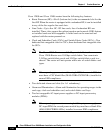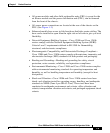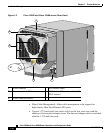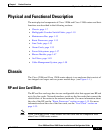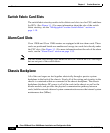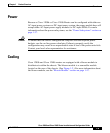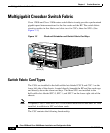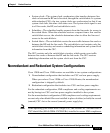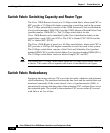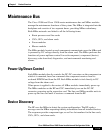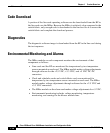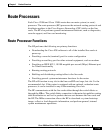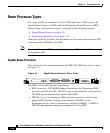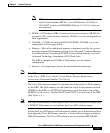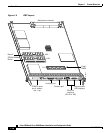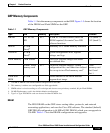
Chapter 1 Product Overview
Multigigabit Crossbar Switch Fabric
1-12
Cisco 12006 and Cisco 12406 Router Installation and Configuration Guide
OL-11497-03
Switch Fabric Switching Capacity and Router Type
The Cisco 12006 Router is based on a 2.5-Gbps switch fabric, where each CSC or
SFC provides a 2.5-Gbps full-duplex connection to each line card in the system.
The 2.5-Gbps switch fabric consists of the 12006 Advanced Clock and Scheduler
Card (product number 12006-CSC=) and the 12006 Advanced Switch Fabric Card
(product number 12006-SFC=). The 2.5-Gbps switch fabric for the
Cisco 12006 Router can be identified by the Cisco identification labels on the
switch fabric cards (SFCs and CSCs): The CSC is labeled CSC-30/120 and the
SFC is labeled SFC-30/120.
The Cisco 12406 Router is based on a 10-Gbps switch fabric, where each CSC or
SFC provides a 10-Gbps full-duplex connection to each line card in the system.
The 10-Gbps switch fabric consists of the Clock and Scheduler Card (product
number GSR6-CSC=) and the Switch Fabric Card (product number GSR6-SFC=).
The 10-Gbps switch fabric cards are labeled simply CSC and SFC.
Note You cannot mix 2.5-Gbps switch fabric cards and 10-Gbps switch fabric cards in
a chassis. The router will not operate with a mix of switch fabric card types.
Switch Fabric Redundancy
Equipping the router with two CSCs provides data path, scheduler, and reference
clock redundancy. The interfaces between the line cards and the switch fabric are
monitored constantly. If the router detects a loss of synchronization (LOS), it
automatically activates the data paths of the redundant CSC, and data flows across
the redundant path. The switch to the redundant CSC occurs within 0.5 second,
with little or no loss of data.



